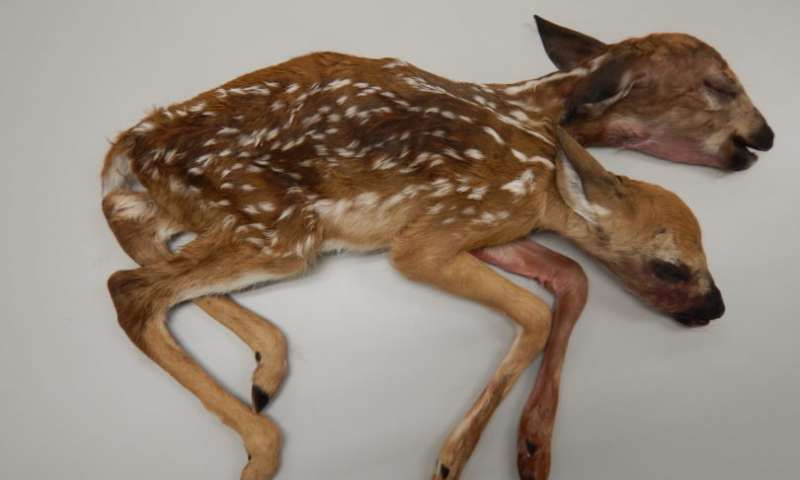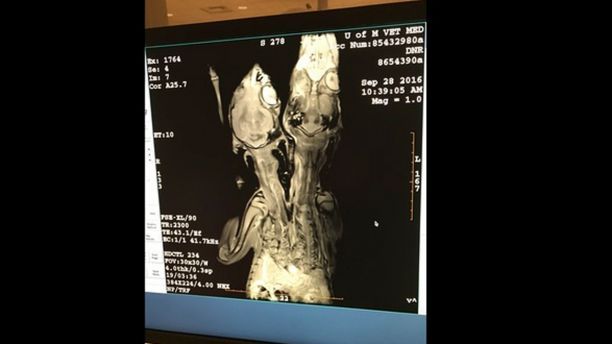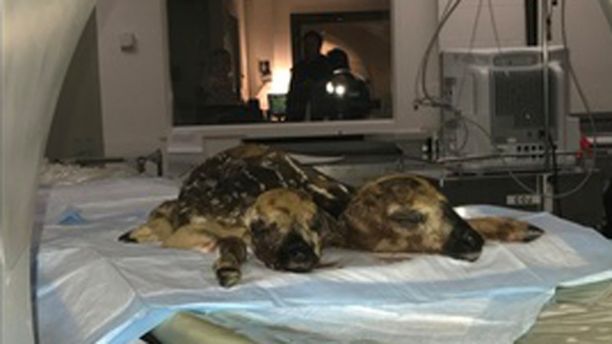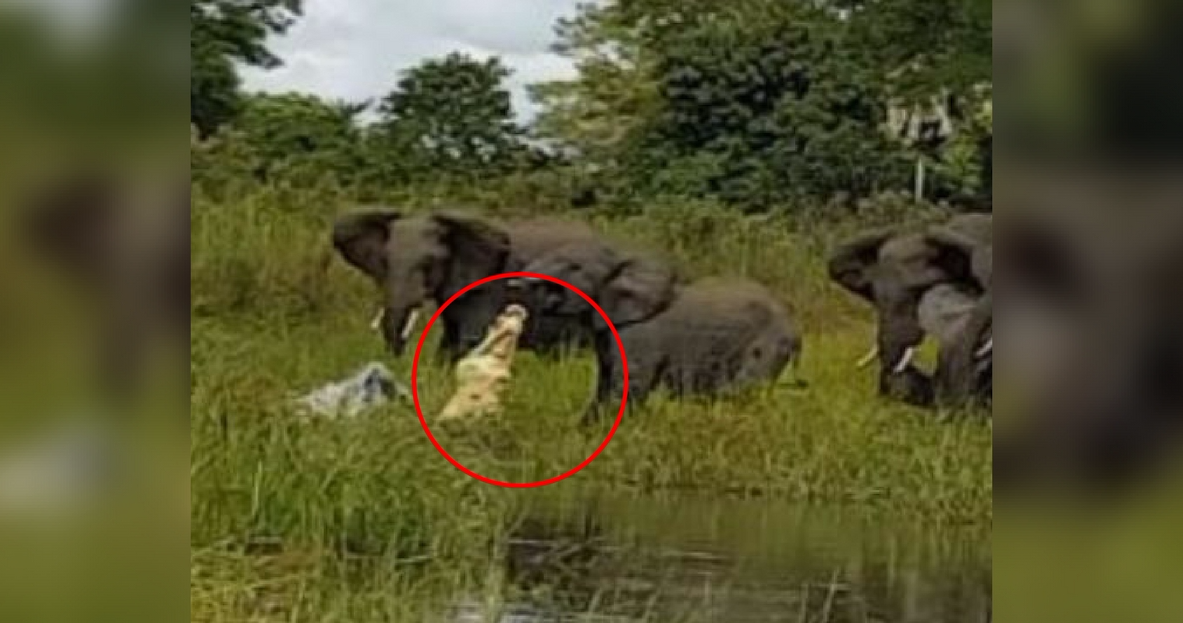A mushroom hunter got the surprise of his life after he found more than just fungi.
The unknown man found the body of conjoined fawns in May 2016 near Freeburg, Minnesota, which were said to be clean and dry.
While we've heard of conjoined twins before, this rarity has stunned scientists, who believe these are the first fawns to have reached full term, as opposed to other two-headed deer who remained in their mother's womb.
"It's amazing and extremely rare," said Gino D'Angelo, a University of Georgia researcher.
"We can't even estimate the rarity of this. Of the tens of millions of fawns born annually in the U.S., there are probably abnormalities happening in the wild we don't even know about," he added.
The researchers at the university conducted a full necropsy, a CT Scan and an MRI on the conjoined fawns and concluded the animals were indeed a pair of female twins that shared a body but had separate necks and heads.
Other abnormalities included two separate gastrointestinal tracts (but with only one fully connected to the anus), two hearts, extra spleens, and a malformed liver.
However, the study, which was published in American Midland Naturalist, revealed the fawns were stillborn.
This was proven when the fawn's lungs were placed in water, which then sunk to the bottom. This meant once they exited the birth canal the twins had never took a breath of air.
"Their anatomy indicates the fawns would never have been viable," D'Angelo said in the paper's release. "Yet, they were found groomed and in a natural position, suggesting that the doe tried to care for them after delivery. The maternal instinct is very strong."
Although the fawns were stuffed and mounted by taxidermists, scientists were able to make a skeletal recreation of the animals, which will be put on display at the University of Minnesota Veterinary Anatomy Museum.
However, this isn't the first time a pair of conjoined animals have been reported. Nineteen pairs of conjoined animals were recorded between 1671 and 2006, with only five belonging to the deer family.
Two of those conjoined twins were white-tailed deer, but in both of the cases the fawns were never born.
While having twins is common for deers, the researchers say it's still a mystery how their children's bodies become conjoined.
"Even in humans we don't know," D'Angelo said. "We think it's an unnatural splitting of cells during early embryo development."
For more animal oddities, check these stories out:
- "Cyclops" Goat Is Melting The Internet's Heart With His Ugly Face
- Super Rare Pink Dolphin Comes Out Of Hiding After 8 Years
- Rare "Two-Faced" Kitten Grows Into The Most Handsome Boy And We Can't Stop Staring At Him
[H/T: Huffington Post, PHYS.org]





